The Union Rooms recalls the origin of this Wetherspoon pub as the West Riding Union Bank, built in 1876. From the late 1800s until the 1960s, Hick Lane was the hub of Batley’s commercial and financial quarter. West Riding Union Bank was taken over by Lancashire & Yorkshire Bank, in 1902, which in turn was absorbed by Martins Bank, in 1928. At the time of the conveyance to Martins, the building was described as bank premises, club rooms, a dwelling house and stables. Barclays took over Martins in 1969.
Photographs and text about The Union Rooms.
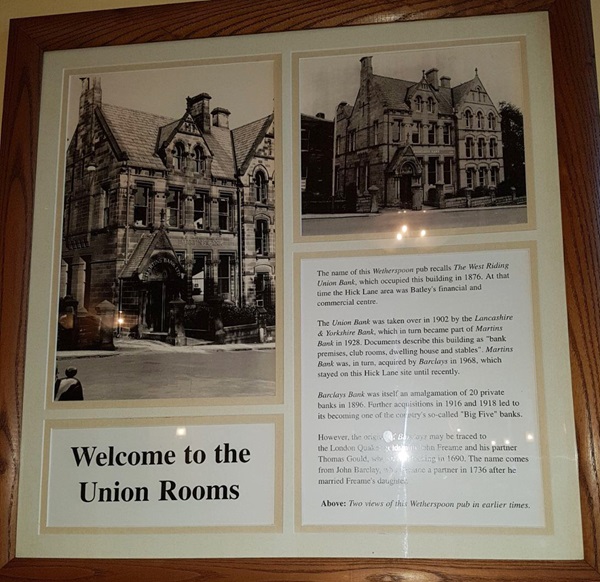
The text reads: The name of this Wetherspoon pub recalls The West Riding Union Bank, which occupied this building in 1876. At that time the Hick Lane area was Batley’s financial and commercial centre.
The Union Bank was taken over in 1902 by the Lancashire & Yorkshire Bank, which in turn became part of Martins Bank in 1928. Documents describe this building as “bank premises, club rooms, dwelling house and stables”. Martins Bank was, in turn, acquired by Barclays in 1968, which stayed on this Hick Lane site until recently.
Barclays Bank was itself an amalgamation of 20 private banks in 1896. Further acquisitions in 1916 and 1918 led to it becoming one of the country’s so-called “Big Five” banks.
However, the origins of Barclays may be traced to the London Quaker goldsmith John Freame and his partner Thomas Gould, who started trading in 1690. The name comes from John Barclay, who became a partner in 1736 after he married Freame’s daughter.
Above: Two views of this Wetherspoon pub in earlier times.
A photograph, print and text about Joseph Priestley.
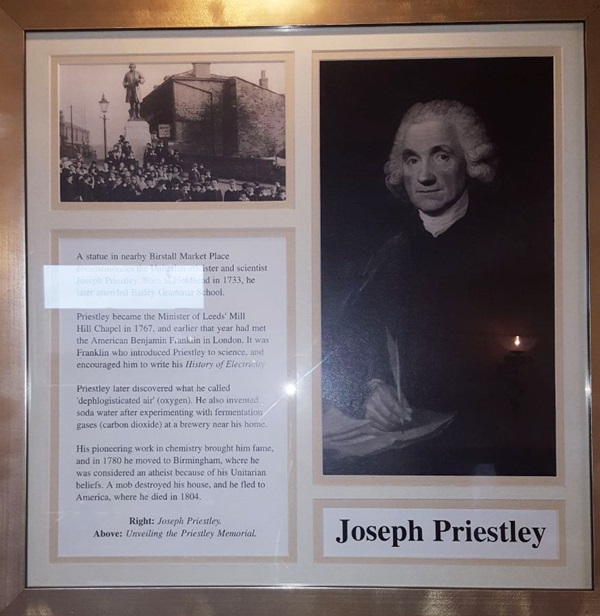
The text reads: A statue in nearby Birstall Market Place commemorates the Unitarian minister and scientist Joseph Priestly. Born at Fieldhead in 1733, he later attended Batley Grammar School.
Priestly became the Minister of Leeds’ Mill Hill Chapel in 1767, and earlier that year had met the American Benjamin Franklin in London. It was Franklin who introduced Priestly to science, and encouraged him to write his History of Electricity.
Priestly later discovered what he called ‘dephlogisticated air’ (oxygen). He also invented soda water after experimenting with fermentation gases (carbon dioxide) at a brewery near his home.
His pioneering work in chemistry brought him fame, and in 1780 he moved to Birmingham, where he was considered an atheist because of his Unitarian beliefs. A mob destroyed his house, and he fled to America, where he died in 1804.
Right: Joseph Priestly
Above: Unveiling the Priestly Memorial.
Photographs of buildings in Batley.
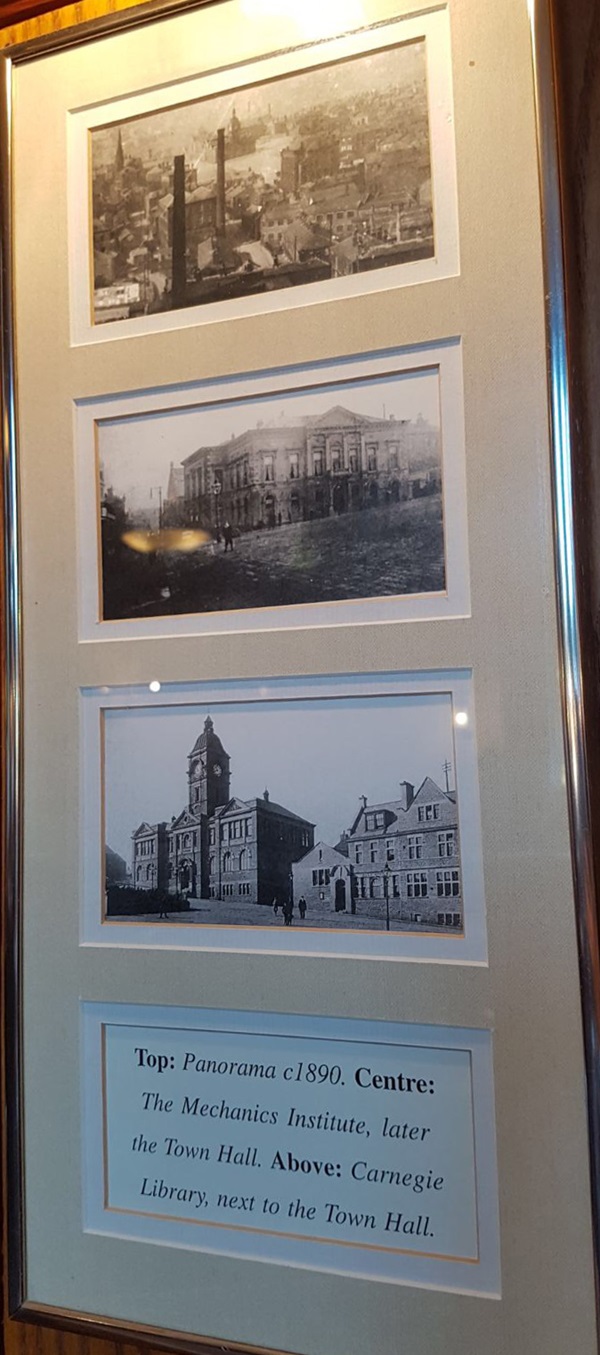
Top: Panorama c1890
Centre: The Mechanics Institute, later the Town Hall
Above: Carnegie Library, next to the Town Hall.
A photograph of the Wesleyan Methodist Chapel, Hick Lane, c1912.
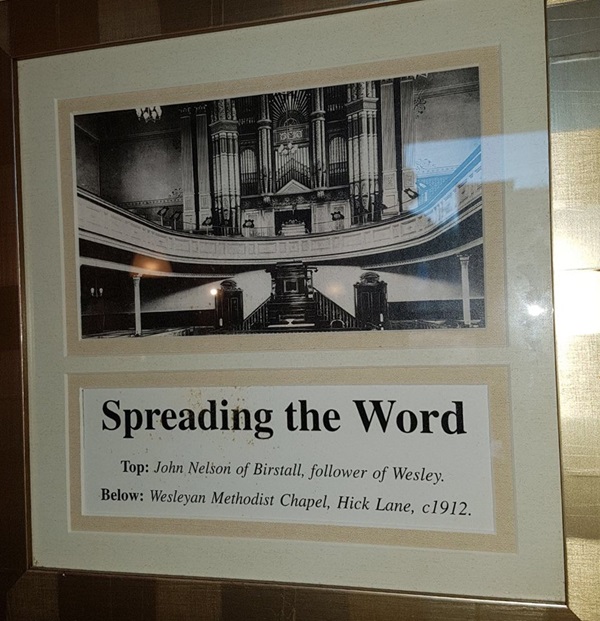
Photographs and text about Shoddy and Mungo.
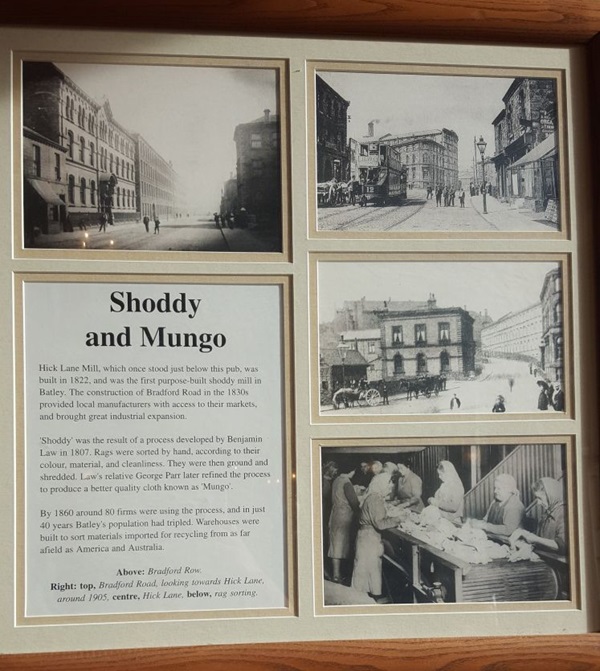
The text reads: Hick Lane Mill, which once stood just below this pub, was built in 1822, and was the first purpose-built shoddy mill in Batley. The construction of Bradford Road in the 1830s provided local manufacturers with access to their markets, and brought great industrial expansion.
Shoddy was the result of a process developed by Benjamin Law in 1807. Rags were sorted by hand, according to their colour, material, and cleanliness. They were then ground and shredded. Law’s relative George Parr later refined the process to produce a better quality cloth known as Mungo.
By 1860 around 80 firms were using the process and in just 40 years Batley’s population had tripled. Warehouses were built to sort materials imported for recycling from as far afield as America and Australia.
Above: Bradford Row
Right: top, Bradford Road, looking towards Hick Lane, around 1905, centre, Hick Lane, below, rag sorting.
Photographs and text about civic pride.
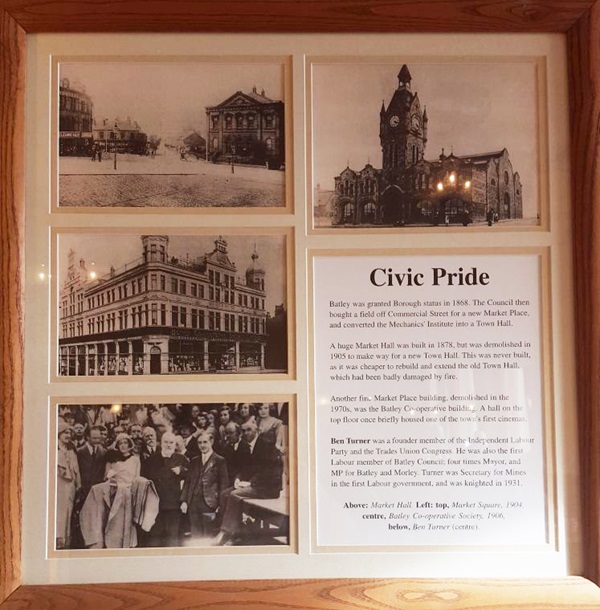
The text reads: Batley was granted Borough status in 1868. The council then bought a field off Commercial Street for a new Market Place, and converted the Mechanics’ Institute into a Town Hall.
A huge Market Hall was built in 1878, but was demolished in 1905 to make way for a new Town Hall. This was never built, as it was cheaper to rebuild and extend the old Town Hall, which had been badly damaged by fire.
Another fine Market Place building, demolished in the 1970s, was the Batley Co-operative building. A hall on the top floor once briefly housed one of the town’s first cinemas.
Ben Turner was a founder member of the Independent Labour Party and the Trades Union Congress. He was also the first Labour member of Batley Council; four times Mayor, and MP for Batley and Morley. Turner was Secretary for Mines in the first Labour government, and was knighted in 1931.
Above: Market Hall
Left: top, Market Square 1904, centre, Batley Co-operative Society, 1906, below, Ben Turner (centre).
Photographs of buildings in Batley.
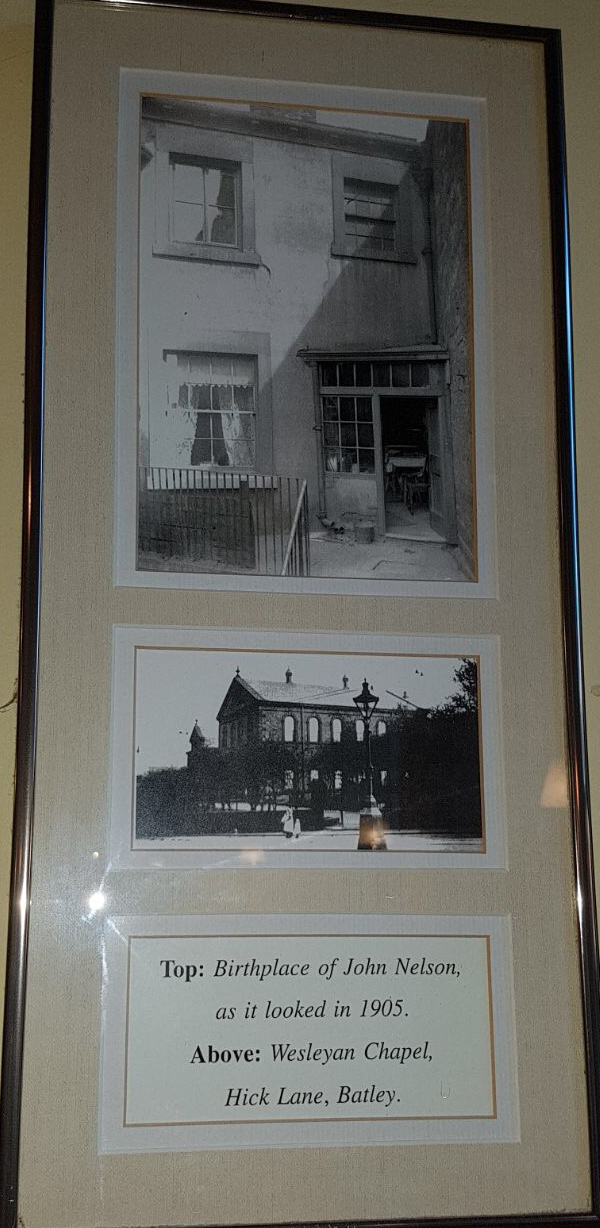
Top: Birthplace of John Nelson, as it looked in 1905
Above: Wesleyan Chapel, Hick Lane, Batley.
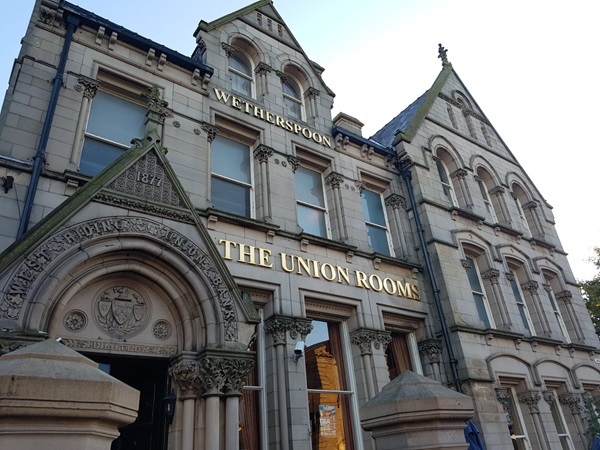
If you have information on the history of this pub, then we’d like you to share it with us. Please e-mail all information to: pubhistories@jdwetherspoon.co.uk